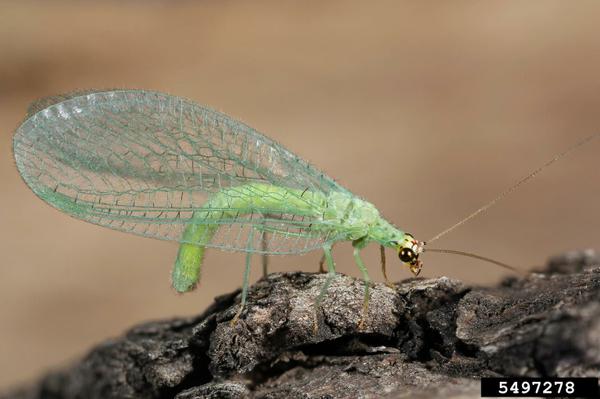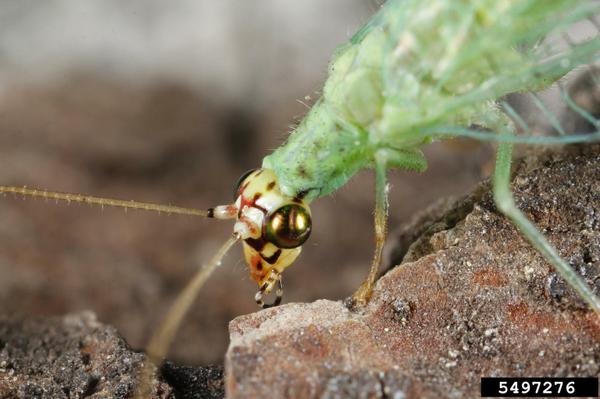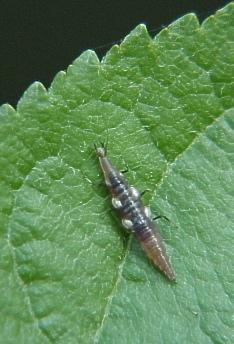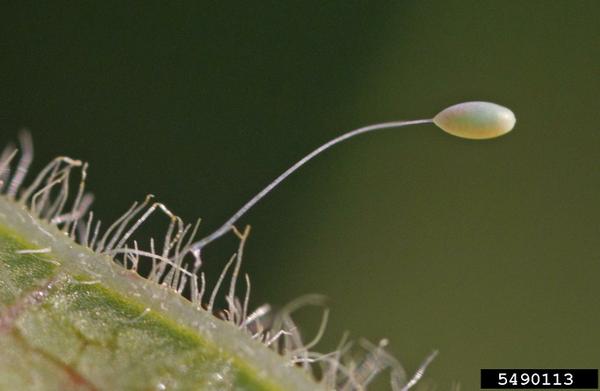Background and Description
Many species of green lacewings (LW) are common in North America, and many serve as important predators in Southeastern orchards. LW larvae (and, in some species, adults as well) are significant consumers of aphids, mites, thrips, lepidopteran eggs, and other soft prey.
Adults are around 1/2 to 1 inch (12.5 to 25mm) long, light green, and have netlike wings that are positioned like roofs over their bodies when at rest. Larvae, sometimes called "aphid lions," are 1/4 to 1/3 inch (6 to 8mm) long, shaped like spindles, and have forward-protruding mouthparts. Eggs are whitish and laid singly or in groups on the ends of long stalks.
Life history
Most LW species overwinter as cocooned larvae, though at least one (Chrysoperla carnea) overwinters as an adult. In season, adult females lay 400 to 500 eggs each. Larvae hatch in about two weeks, but up to 2 months may be required before adults develop. There are usually 2 to 4 generations per year.
Predation
Some species of LW adults are predatory while others feed mainly on honeydew and pollen (though even these will supplement their diets with aphids). Larvae feed on green apple and spirea aphids as well as mites, thrips, and the eggs of caterpillars. Larvae impale their prey, inject an enzyme that dissolves the body contents, and then use their jaws to suck out the digested material. One lacewing may consume up to 150 aphids per week.
Publication date: Feb. 23, 2015
N.C. Cooperative Extension prohibits discrimination and harassment regardless of age, color, disability, family and marital status, gender identity, national origin, political beliefs, race, religion, sex (including pregnancy), sexual orientation and veteran status.






